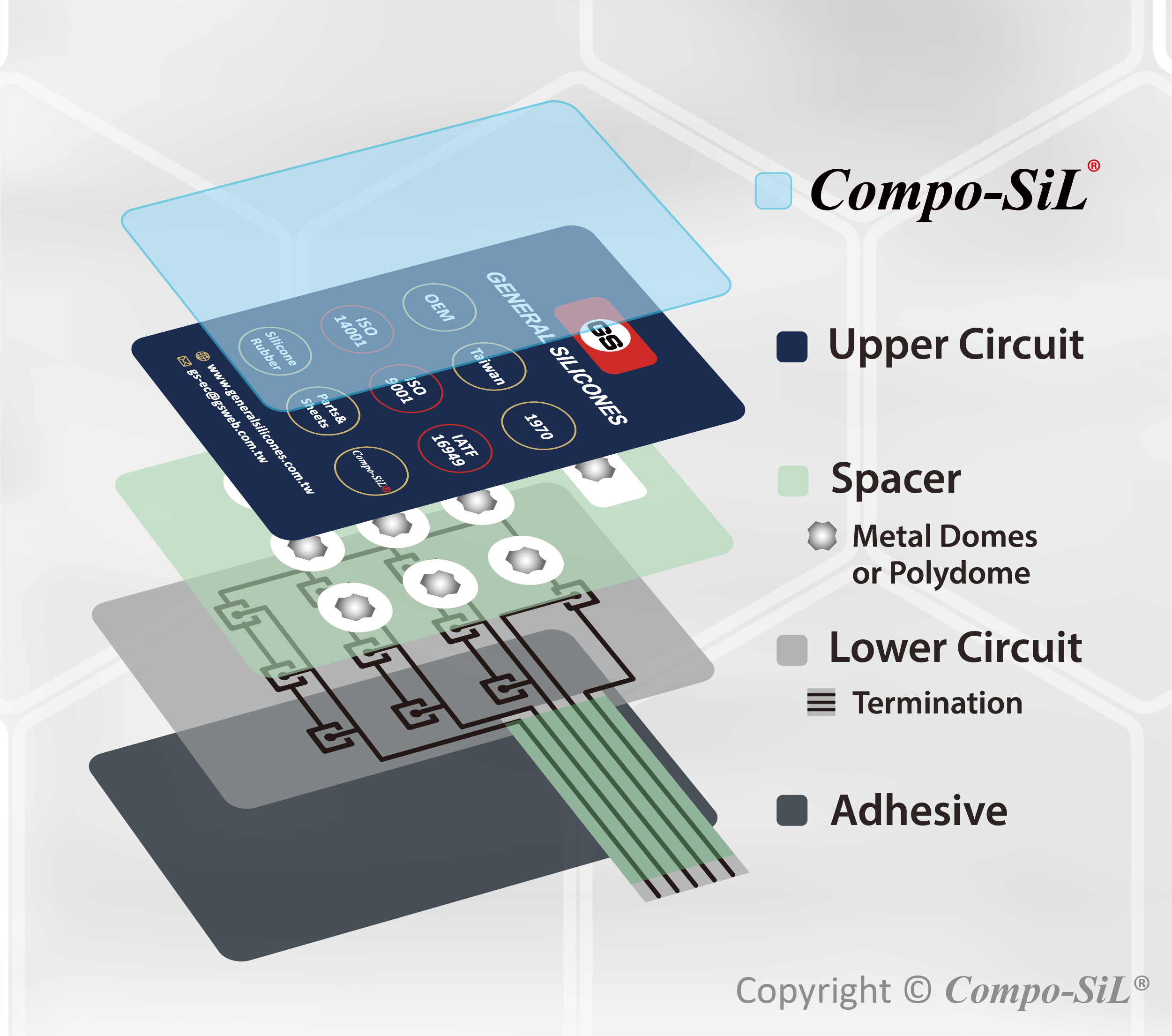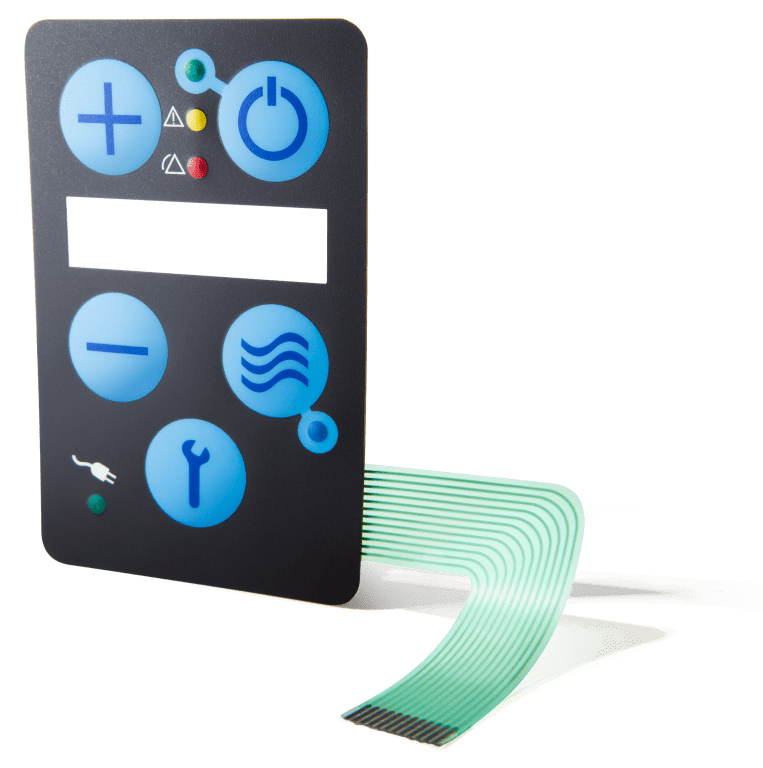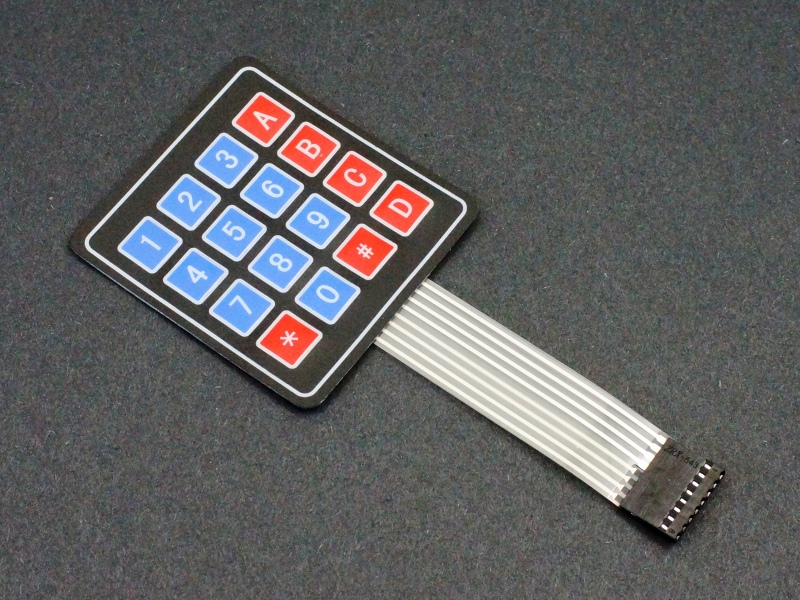Comprehending the Relevance of Membrane Switches in Interface
Membrane switches are essential elements in the design of effective individual interfaces, helping with not just performance however likewise improving visual charm and individual interaction. Their unique attributes, such as resistance to environmental variables and personalized styles, make them appropriate for a diverse array of applications throughout several markets. As we check out the future trends and numerous benefits related to Membrane technology, it comes to be clear that these switches are greater than just elements; they represent a merging of innovation and usefulness. The implications of this modern technology on customer experience are worth analyzing additionally.
What Are Membrane Switches?

The spacer layer, which consists of sticky buildings, enables for the splitting up of the circuit layer from the overlay, guaranteeing that the button remains in a non-activated state until pressed. When pressure is used to the overlay, it presses the spacer layer, linking the space and finishing the circuit in the underlying layer. This layout not just lowers the physical area required for standard mechanical buttons however likewise improves the longevity of the gadget, as Membrane buttons are usually resistant to dirt, dampness, and other ecological aspects.
Typically found in applications varying from customer electronic devices to clinical gadgets, Membrane switches are indispensable to contemporary technology, giving a efficient and user-friendly user interface that straightens with contemporary layout demands.
Advantages of Membrane Switches
While various switch technologies exist, Membrane Switches deal distinct benefits that make them specifically preferable in different applications. One of the primary advantages of Membrane switches is their portable design, which permits space-saving executions in devices where property is restricted. Their slim profile not only enhances aesthetic allure but likewise facilitates light-weight construction.
Another significant advantage is their resistance to ecological aspects. Membrane switches are normally secured versus wetness, dirt, and contaminants, making them ideal for usage popular environments, such as clinical devices and commercial devices. This durability extends the life-span of the switch, lowering upkeep prices and enhancing reliability.
Furthermore, Membrane buttons can be tailored to meet specific design demands, incorporating distinct graphics and colors that enhance customer communication. Their responsive feedback alternatives can also be tailored to provide an enjoyable individual experience. Furthermore, Membrane switches are affordable, particularly in high-volume applications, as they can be generated effectively.
Applications in Numerous Industries

In the consumer electronic devices sector, Membrane switches prevail in gadgets such as microwaves, washing makers, and push-button controls. Their tactile comments and aesthetic choices boost user experience while supplying a smooth, modern appearance. Additionally, vehicle producers utilize Membrane switches in control panel controls and infotainment systems, where space is restricted, and user involvement is important.
Furthermore, the commercial market leverages Membrane buttons in control panels for machinery and equipment, enabling intuitive procedure in frequently rough atmospheres. Their resistance to chemicals and dampness guarantees long life and dependability in these applications. On the whole, the versatility of Membrane Switches contributes dramatically to their extensive usage, making them essential in numerous technological domains.
Layout Considerations for Membrane Buttons

When developing Membrane buttons, several essential factors to consider have to be considered to guarantee ideal capability and user experience. The choice of materials is crucial; choosing long lasting, top notch substratums can boost the button's long life and resistance to ecological variables such as dampness and temperature level variations.
Second of all, the style of the visuals overlay must prioritize clearness and simplicity of use. Icons and text must be legible, and the layout should promote instinctive communication (membrane switches). In addition, responsive comments is important; incorporating a tactile dome or various other devices can improve the individual experience by offering physical confirmation of activation
An additional vital aspect is the switch's electrical efficiency. Developers should ensure that the conductive traces are properly made to lessen resistance and prevent signal interference. This entails examining the required actuation pressure and making certain compatibility with the electronic components they will certainly interface with.

Future Patterns in Membrane Innovation
As technology proceeds to advancement, Membrane switches are positioned to evolve dramatically, driven by developments in products and manufacturing strategies. One emerging pattern is the incorporation of sophisticated products, such as flexible substratums and conductive inks, which enhance toughness and reduce the general weight of Membrane switches. These materials not just improve the tactile action but likewise enable the design of buttons that can hold up against harsher ecological problems.
Additionally, the assimilation of touch-sensitive modern technologies is transforming typical Membrane Switches right into even more interactive interface. Capacitive touch sensing units installed within Membrane switch panels can supply a more responsive and instinctive user experience, lining up with the expanding demand for smooth, like it modern-day styles in customer electronics.
Furthermore, developments in printing strategies, such as digital and 3D printing, allow rapid prototyping and customization of Membrane switches. This flexibility allows manufacturers to respond faster to market demands and consumer choices.
Finally, sustainability is coming to be a substantial emphasis, with suppliers discovering eco-friendly materials and processes. As these trends unravel, the future of Membrane modern technology assures boosted performance, visual charm, and environmental responsibility, solidifying their role in advanced interface throughout different markets.
Final Thought
In final thought, Membrane Switches stand for a crucial This Site element in the design of user interfaces, incorporating capability with visual versatility. Their advantages, consisting of toughness and resistance to ecological variables, make them appropriate for diverse applications throughout numerous markets. Thoughtful style considerations boost individual interaction and experience. As innovations in innovation continue, the advancement of Membrane buttons is expected to more fine-tune user interfaces, driving technology and enhancing usability in a significantly complicated technical landscape.
Membrane buttons are essential parts in the design of efficient customer interfaces, helping with not just capability but likewise boosting aesthetic charm and customer communication.Membrane Switches offer as an essential component in different customer interfaces, facilitating a seamless communication in between customers and electronic gadgets.While many button Learn More technologies exist, Membrane Switches offer unique benefits that make them specifically desirable in various applications.Furthermore, Membrane buttons can be tailored to fulfill specific design demands, integrating special graphics and shades that boost user interaction.In conclusion, Membrane Switches represent an important component in the style of individual interfaces, integrating performance with visual versatility.